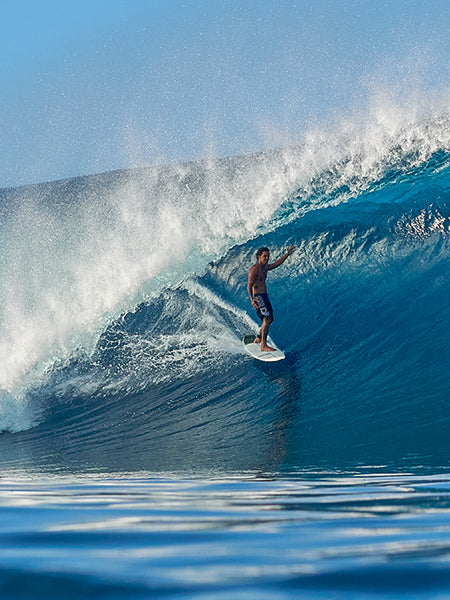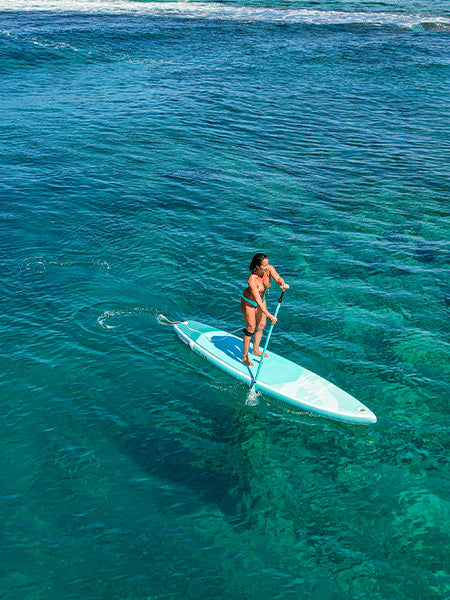Slow down on the water
Knowing how to slow down on the water can help if you are a beginner. Slowing down is going to come in handy if you want to stop, avoid an obstacle, wait for someone, or just get some rest.

To slow down, several options are available to you: either shock a little, or completely, or even to the point of being backwinded; either simply grab the downwind handle.
To shock
To shock, you have to release the tension in your back hand. Pushing horizontally and leeward in this hand will open the wing and it will lose its power. Keep your front hand in the same place. If you push with both hands, you’re going to get pulled off more than anything else. Shocking happens by changing the angle of incidence of the wing in the wind. You might as well bring the front hand back towards you to decrease the angle of attack, but this would create an unpleasant overload of power at the start of this movement. To put it simply, your front arm is a fixed point and you push your rear arm leeward.
The radical version of shocking the wing is to go backwind. Push very hard until you reverse the profile of the wing by inflating it towards you. The slowdown is abrupt !!!
Don’t be surprised either if after shocking the wing, it naturally goes to the umbrella position over your head. This position of the wing will help you maintain low speed and balance. Putting the wing in above your head like an umbrella is another way to shock the wing. And this technique has a definite advantage: you provide support to relieve your shoulders and prevent the wing’s ear from touching the water.
To simply shock, you push in the back hand in the horizontal plane. But to shock towards the umbrella position, you push on your backhand while lowering it; and especially at the same time you raise your front hand over your front shoulder, but without necessarily bringing it back towards you to the point of bumping the wing in your nose 😉 The batten of your wing forms an angle close to 45° with the water, or even less: it flattens out in the wind. Thus the wing will go from full power to only providing soft lift which will make you slow down.
The downwind handle
Radical solution: you can take the wing by the downwind handle. To do this, you will have to let go of your back hand. Just letting go will already slow you down. Then you will lower the wing in front of you with your front hand. Once that’s done, you’ll take the downwind handle (the one on the leading edge) with the hand you let go (ex back hand) and let go of the front hand. Now that you have the wing in neutral flying at the level of your hip, you will decelerate until you come to a stop.
Be careful not to put the wing in front of your board with your front hand. In which case you will bear off and go leeward. You can also put your free hand (ex front hand) on the leading edge to stabilize the wing and avoid losing your balance.
Techniques that are also very effective if you wing skate.
Another trick is to go upwind until you completely face the wind. But this action takes quite a long time before slowing down. Just push in the back foot and move the wing back behind you, shocking it a bit. Watch out for the fall once you are facing the wind 😉
Last trick: pulling up the board will greatly reduce your speed. But it takes expertise to properly measure the action and not fall. The wing boards are short, and therefore easy to unbalance.
There you go, you know how to slow down on the water.
Malo Guénolé








